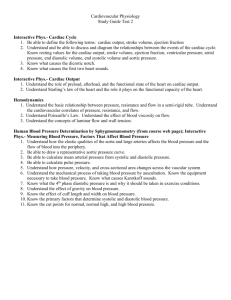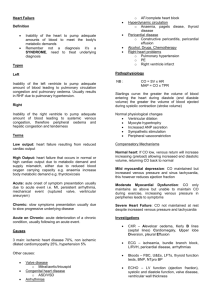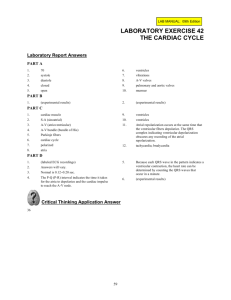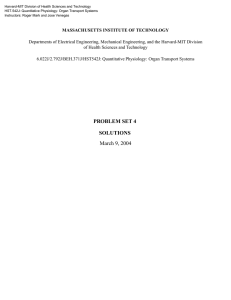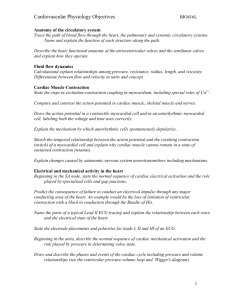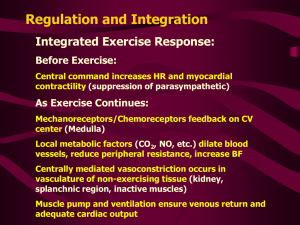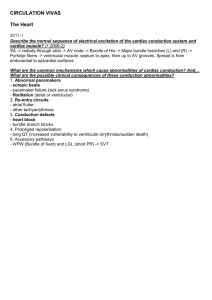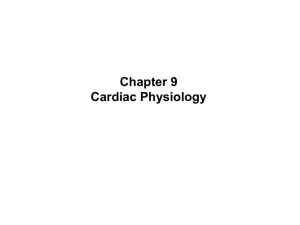test 2 questions march 2006
advertisement
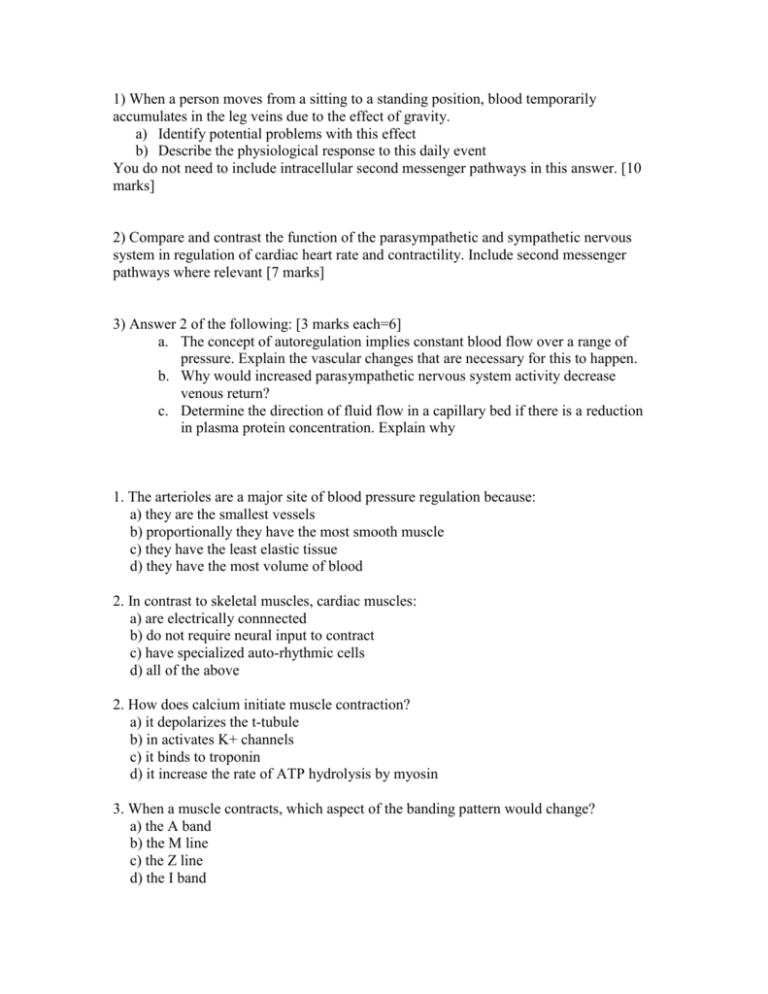
1) When a person moves from a sitting to a standing position, blood temporarily accumulates in the leg veins due to the effect of gravity. a) Identify potential problems with this effect b) Describe the physiological response to this daily event You do not need to include intracellular second messenger pathways in this answer. [10 marks] 2) Compare and contrast the function of the parasympathetic and sympathetic nervous system in regulation of cardiac heart rate and contractility. Include second messenger pathways where relevant [7 marks] 3) Answer 2 of the following: [3 marks each=6] a. The concept of autoregulation implies constant blood flow over a range of pressure. Explain the vascular changes that are necessary for this to happen. b. Why would increased parasympathetic nervous system activity decrease venous return? c. Determine the direction of fluid flow in a capillary bed if there is a reduction in plasma protein concentration. Explain why 1. The arterioles are a major site of blood pressure regulation because: a) they are the smallest vessels b) proportionally they have the most smooth muscle c) they have the least elastic tissue d) they have the most volume of blood 2. In contrast to skeletal muscles, cardiac muscles: a) are electrically connnected b) do not require neural input to contract c) have specialized auto-rhythmic cells d) all of the above 2. How does calcium initiate muscle contraction? a) it depolarizes the t-tubule b) in activates K+ channels c) it binds to troponin d) it increase the rate of ATP hydrolysis by myosin 3. When a muscle contracts, which aspect of the banding pattern would change? a) the A band b) the M line c) the Z line d) the I band 5. An important aspect in the overall electrical coordination of the hearbeat is: a) rapid electrical conduction through the atrioventricular node b) coordination of the heartbeat by the sympathetic nervous system c) ventricles depolarize before the atria d) a delay between atrial depolarization and ventricular depolarization 6. Why is there a period of isovolumic relaxation in the diastolic phase of cardiac cycle? a) after systolic contraction, aortic pressure > ventricular pressure b) after systolic contraction, ventricle pressure > atrial pressure c) after systolic contraction, atrial pressure > venous pressure d) none of the above Patient 1 Patient 2 7.Examine the above ECG traces. In comparison to Patient 1, Patient 2 likely has a) no problem b) a complete AV blockage c) a partial AV blockage d) complete SA node blockage 8. The plateau phase of the ventricular myocyte action potential is due mainly to: a) no charges moving across the membrane at that time b) opening of T-type calcium channels c) sustained opening of a voltage-gated sodium channel d) a balance of inwardly and outwardly moving positive charge 9. If the atrial muscle cells failed to contract, what would be the initial effect on cardiac function? a) a 20% reduction in cardiac output b) a 20% reduction in end-systolic volume c) a 80% increase in systemic filling pressure d) a 80% decrease in venous return 10. What pressure changes mark the transition from the systolic to the diastolic phase of the cardiac cycle? a) when ventricular pressure becomes greater than aortic pressure b) when atrial pressure becomes greater than ventricular presure c) when ventricular pressure becomes less than aortic pressure d) when atrial pressure becomes greater then venous pressure 11. You measure your friends blood pressure and find the systolic pressure is 120 mmHg and the diastolic pressure is 90 mmHg. The mean arterial pressure is: a) 100 b) 105 c) 110 d) 115 12. High blood pressure is sometimes due to abnormally high contraction of arteriole smooth muscle. Which of the following might effectively treat this condtion? a) a drug that blocks voltage gated sodium channels b) a drug that opens dihydropyridine receptors c) a drug that blocks the effectiveness of IP3 d) a drug that the blocks the sarcoplasmic calcium pump 13. In which of the following vascular beds are local and metabolic factors more important than SNS activity for determining arteriole radius? a) coronary b) skin c) muscle d) gut 14. The most important factor that enables muscle pumps to aid venous return is: a) high transmural pressure b) myogenic autoregulation c) SNS activity that causes venoconstriction d) one way valves in the veins 15. Increased parasympathetic nervous system activity would cause a decrease in mean arterial pressure by: a) reducing total peripheral resistance b) reducing heart rate c) increasing end systolic volume d) increasing end diastolic volume 16. Increased aortic pressure would cause a decrease in cardiac output by: a) reducing total peripheral resistance b) reducing heart rate c) increasing end systolic volume d) increasing end diastolic volume 17. If right atrial pressure were to suddenly increase to >7mmHg in a normal person, the immediate effect would be: a) venous return would fall to zero b) cardiac output would double c) venous return would double d) there would be no effect 18. Increased action potential frequency from the aortic baroreceptor would lead to: a) vasodilation b) reduced heart rate c) reduced ventricular contractility d) all of the above
